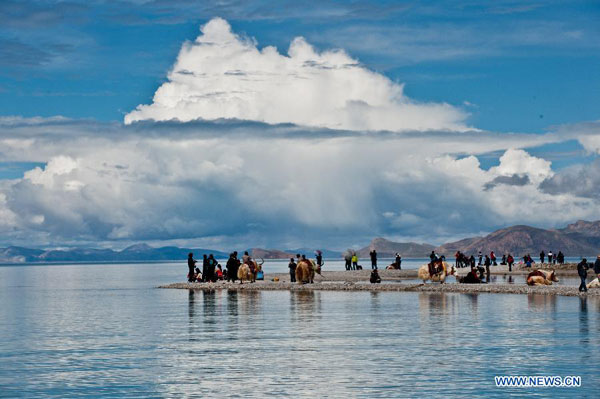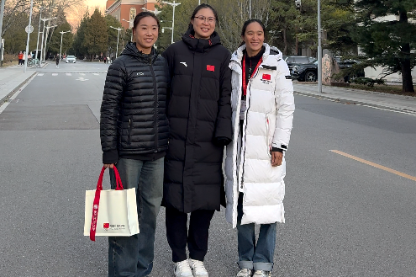Scientists obtain lake sediment core on Qinghai-Tibet Plateau for environmental study


LHASA -- A Chinese research team has, for the first time, drilled a lake sediment core in a deep lake on the Qinghai-Tibet Plateau, to study the history of climate and environmental changes on the plateau.
Using self-developed drill systems, researchers from the Chinese Academy of Sciences (CAS) obtained the lake sediment core with a length of 100.63 meters at a depth of 95 meters in Lake Namtso, a major lake of the plateau. The core samples are expected to help scientists analyze the history of climate and environmental changes on the central Qinghai-Tibet Plateau over the past 150,000 years.
Located in the heart of the plateau, Lake Namtso is 4,730 meters above sea level. It is an important survey area of the country's second comprehensive scientific expedition to the Qinghai-Tibet Plateau that began in June 2017.
After conducting surveys on plateau lakes, including Lake Namtso, the researchers have obtained plentiful first-hand data, which provide a scientific basis to know more about the current situation of the lakes and their response to climate change, said Wang Junbo with the CAS, one of the researchers of the survey.
In a new research project approved last month, Chinese scientists will work with 12 researchers from seven countries including Germany, Britain and the United States, to extract a total of 2,250 meters of lake sediment at five points in Lake Namtso to study the climate and environmental conditions over the past million years.
- Mainland coast guard's patrol in Xiamen-Kinmen waters to safeguard maritime order: spokesperson
- Independent committee starts work as HK moves to liquefy owners' group
- Tai Po fire death toll climbs to 161
- China's top specimen event lands in Shanghai
- One city, one heart
- Children learn to make dumplings ahead of Winter Solstice




































